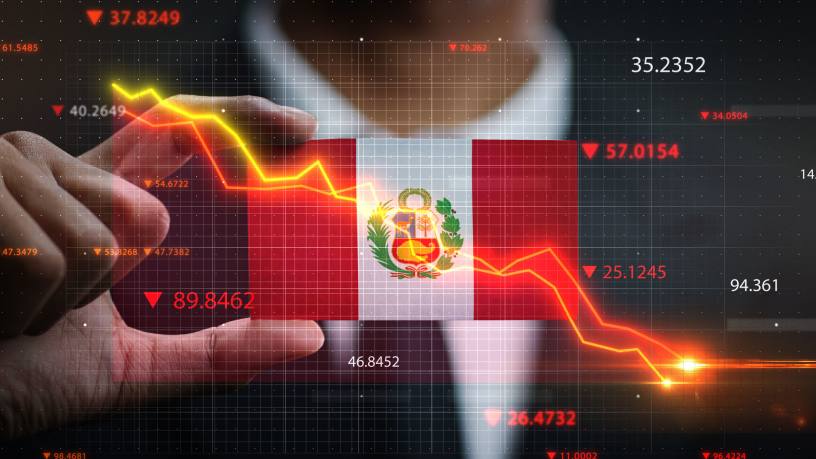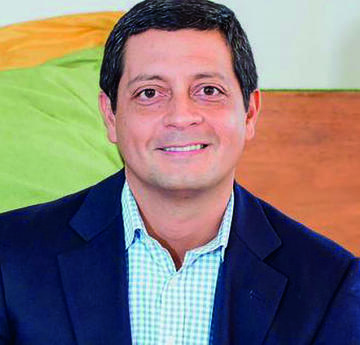Peru, like most countries around the world, is starting to come out of the massive economic downturn created by the pandemic. The economy contracted by 11.1% in 2020, the steepest drop for a large economy in Latin America. The International Monetary Fund forecasts Peru will grow by 9% this year, which is more than its peers, but still not enough to get back to pre-pandemic levels.
The economic decline, the worst since 1989, slammed banks. The banking regulator, SBS, reported net income for the 16 full-service banks fell by 76.8% compared to the previous year. Return on assets came in at 4%, compared to 18.3% the previous year. The 11 municipal savings and loans banks had it even tougher, with net income dropping by 81.3% and return on assets down from 12.4% to 2.2%.
Conditions are improving, but recovery will be slow. The second wave of the virus forced a new lockdown in February that affected regions that are home to more than half the country’s 32.5 million people. Congress is also creating challenges with laws affecting the financial system and there will be doubts about the political direction of the country until the next president is inaugurated at the end of July.
It is a very tough time, tougher than any crisis I remember
Optimistic but realistic
“It is not going to be an easy year. It will not be as complicated as 2020, but 9% growth does not mean the financial system is going to return to the pre-pandemic levels of profitability or growth,” says Luis Felipe Castellanos, chief executive of Interbank.
In a normal year, 9% growth should translate into growth in loans by close to 30%. But this is not going to be a normal year and banks are expected to take a conservative approach to loans, even though liquidity has increased strongly in the past 12 months.
Fernando Ruiz Caro, head of the Cusco municipal savings and loans bank Caja Cusco, agrees, saying the crisis disrupted value chains and it will take time to build back up to pre-pandemic levels.
“It is a very tough time, tougher than any crisis I remember. We need to be there for our customers and find creative ways to assist them. The good thing is that Peruvian entrepreneurs are quick to reinvent themselves,” says Mr Ruiz Caro, who is also president of the 11-member Peruvian Federation of Municipal Savings and Loans Banks.
The Peruvian government recognises the difficulties, but also says conditions have improved dramatically since the height of the pandemic’s first wave. Authorities also point out that while net income was down substantially in 2020, this was partly due to a whopping 120% increase in provisioning expenses by banks.
“Earnings have declined, which was obviously going to happen, but indicators like capitalisation and non-performing loans (NPLs) show that that the banking system is solid. Reactivation is underway and the situation will start to improve,” economy and finance minister Waldo Mendoza told The Banker during a press briefing.
NPLs increased to 3.8% of the total loans in 2020, up from 3% in 2019, but the numbers are tough to gauge as banks have extended grace periods and used other mechanisms to extend the life of loans that would otherwise be delinquent.
State moves
While improvements are starting to solidify, banking executives and financial analysts say the government will have a huge role to play in determining how quickly the sector emerges from the debacle of 2020.
“There are many moving parts right now,” says Cynthia Cohen, sector lead for financial institutions at S&P Global. She says risks come in the form of repeat waves of the Covid-19 pandemic, economic deterioration and politics.
One risk that has dissipated for the time being is the fear of a spike in NPLs starting in May — the first anniversary of the cornerstone of the government’s economic recovery plan, Reactivate Peru. The programme provided approximately $17bn in government-backed loans through the financial system. Several other programmes, known as business support funds, were created for microenterprises and small business, tourism businesses and the farming sector.
The government published a decree on March 6 that businesses which received loans would get an additional 12 months to start repaying the principal amount, but will be required to pay interest and commissions. The Economy and Finance Ministry says the extension applies to all 435,000 microenterprises that received loans, which topped off at $26,000. There are conditions in place for small and medium-sized businesses to qualify.
According to data from the Central Reserve Bank (BCR), loans to the private sector were up 11.6% in January 2021. The BCR stated that loans would actually have decreased by 5.3% that month compared to a year ago without Reactivate Peru.
The BCR, in a statement to The Banker, says that the loans acted as a counter-cyclical policy, “avoiding a breakdown in the payment chain and an economic depression”. The programme also helped pass along the reduction in the benchmark interest rate throughout the financial system, which was lowered to 0.25% in April — a historic low for Peru — and remains there. The BCR has made no indication that it plans on increasing the rate any time soon.
Mr Ruiz Caro says the 12-month extension was almost as important as the original programme, which he said injected liquidity that saved the country from much greater pain.
“The government understood that the extension was needed, but it also understood that it could not simply be a blanket approach and some payment was needed. Caja Cusco was one of the most active in the Reactivate programme and I think we helped avoid a complete crisis,” he says.
Mr Castellanos is on the same page, saying the government’s decision was important, especially for sectors like hospitality that are in an even tougher bind today than a year ago. While Peru’s gross domestic product expanded by 0.5% in December, this sector was down 30.1%. It was down 50.5% for the year — nearly double the second worst-hit sector, transportation. He says banks are fully behind the government’s moves with Reactivate Peru: “Our vocation today is to help Peruvians get out of this difficult situation. The financial system is the backbone of the country’s response so that we can get back to past growth rates.”

Pandemic rules: 98% of Interbank executives continue to work from home
Congressional clash
Bankers and analysts do not have the same favourable opinion of legislation adopted by Congress and new bills under consideration.
S&P Global’s Ms Cohen says that while bills concerning financial systems are popping up around the world, the Peruvian Congress has been busier than its peers with a host of proposals from freezing loan payments to capping interest rates.
“In Peru, Congress has been very active with legislative possibilities that would be harmful to the profitability of the banking system. We know banks tend to compensate when profits are threatened, so the private sector will be affected by more expensive credit,” says Ms Cohen.
Among the legislation creating the most concern is one that would require the BCR to establish caps on interest rates and another that would allow workers to withdraw the full amount of funds deposited in workers’ compensation funds, known as CTS.
Congress on March 11 voted 85-8, with 12 abstentions, to override interim president Francisco Sagasti’s veto of the legislation capping interest rates. Lawmakers had approved the bill last year, but Mr Sagasti vetoed it in early February, arguing that it was unconstitutional.
The government had previously warned Congress that it would challenge the legislation in the Constitutional Court, Peru’s highest court, if the veto were overturned. The court has sided with the administration in three other challenges since Mr Sagasti took office in November 2020.
Mr Ruiz Caro says while the bill may seem positive to lawmakers, “it is going to be very negative in the long run and hurt financial inclusion. We have explained this to Congress, but they do not seem to understand it,” he says.
He says it would specifically hurt savings and loans, which cater to small businesses with riskier loans that tend to higher rates.
Sergio Urday, head of the economic information unit at the banking association, Asbanc, says that while the legislation does not include a specific cap on rates and leaves the decision to the BCR at six-month intervals, it would hurt.
“Any rate, even if it is not too restrictive, is going to hurt microfinances and limit access to credit for people with lower incomes,” he says.
In a late February report, Moody’s stated that the change would not have an overly negative impact on large banks, but imposition of maximum interest rates would affect consumer lenders. The report claimed that microcredit and small business lenders “would need to reduce their pricing for loans to the yet-to-be assigned threshold, which would greatly diminish their profitability because a large percentage of their margins are absorbed by necessary operating and credit costs.”
The move to allow full access to the CTS funds would also hurt savings and loans institutions disproportionately. They tend to have much higher percentages of their total savings from these kinds of funds. Of the 11 institutions in Mr Ruiz Caro’s federation, CTS deposits are as high as 23.3% of total deposits. In Caja Cusco, they represent 16.3%.
Among the big institutions, Banco de Crédito, the country’s largest bank, has the highest percentage of CTS deposits at 6.4%.
Digital crusade
Silver lining is too rosy a term, but the pandemic has had a huge impact on changing the way Peruvians interact with businesses and the financial system. The pandemic deepened a new financial ecosystem that experts thought was still years in the future.
“Cash was still king in Peru in 2019, but that has changed. The pandemic grew the ecosystem of virtual payments in a way we never thought possible,” says Asbanc’s Mr Urday. “One of the results of the pandemic is people avoiding cash.”
Asbanc data has mobile banking going from 5% of the market at the end of 2019 to 40% today; and the Peruvian Electronic Commerce Chamber, Capece, reported that the number of businesses selling online increased from 65,800 to 260,000 during 2020. E-commerce sales doubled during the year to $6bn.
Cash was still king in Peru in 2019, but that has changed. The pandemic grew the ecosystem of virtual payments in a way we never thought possible
Mr Castellanos says that Interbank had been working on several models, including a few pilot programmes for telecommuting, and was examining all sorts of digital solutions when the pandemic began.
“What we had thought would take four years to implement, we had up and operating in only a few months. The change has been tremendous, but we had been preparing. It just happened much faster than we could have imagined,” he says.
A year into the pandemic, 98% of the Interbank’s executives continue to work at home and the lender has put in place a wide array of policies for front-office personnel in branches. Interbank has been hiring branch employees and executives through virtual interviews and, in some cases, has never had physical contact with them. Mr Castellanos says there are young men and women working for Interbank from Argentina and Brazil, and they have never set foot in Peru.
The most substantial change has been in its proprietary e-wallet, Tunki, and through PLIN, an e-wallet that currently incorporates Interbank and three other banks, BanBif, BBVA and Scotiabank. Three new banks should be added this year.
Tunki had approximately 100,000 users when the pandemic hit. Interbank not only realised the product would help its customers, but reached out to the government to offer it as a vehicle for getting stimulus payments to Peruvians. Interbank ended 2020 with more than 850,000 people using Tunki.
PLIN, which was launched a year ago in February, has had even more phenomenal growth. “The growth has been explosive. Reaching 3 million users in a year is something that we did not even think was possible,” says Mr Castellanos.
The newest venture shaking up the market involves Interbank and Rappi, a Colombian ‘unicorn’ that developed a pioneering delivery app that now operates through much of South America. They have launched Rappibank, which includes a virtual account and credit card offered by Interbank within the Rappi platform.
“Our clients are changing and we need to change to stay connected to them, to accompany them in their day-to-day activities. The alliance with Rappi allows us to offer financial products that are 100% digital,” says Mr Castellanos.
An even broader effort is a multi-sector alliance to expand the digital payment universe through Peru’s large network of wholesale markets. Asbanc’s Mr Urday calls it a “digital crusade” aimed at vastly increasing financial inclusion. In September 2020, Asbanc, the three e-wallet platforms, the state’s digital government secretariat, and the association of municipal governments launched a plan to get market stalls and their customers to use e-payments.
Mr Urday said the idea was initially discussed as a way to work with the government on improving delivery of stimulus payments, but what emerged was a more comprehensive plan that would promote the use of e-cash while also helping to reduce contagion. Peru’s wholesale markets were a major source of the spread of Covid-19 at the start of the pandemic.
The ‘Pay Safe, Easy and Without Contact’ programme has been rolled out in 74 markets — 54 in the capital, Lima, and 20 in four other provinces. The most recent campaign, in the first week of March, included five wholesale markets in Lima’s sprawling Villa María del Triunfo district, and came at the request of the district mayor.
The programme spends about three weeks working with vendors on the use of e-wallets. Short workshops are held with customers on the benefits of using e-cash. It offers incentives to vendors with the highest use of e-cash sales.
“We have embarked on a digital crusade to create a large-scale digital ecosystem that will have a role in increasing financial inclusion, which is still low in Peru,” says Mr Urday.














